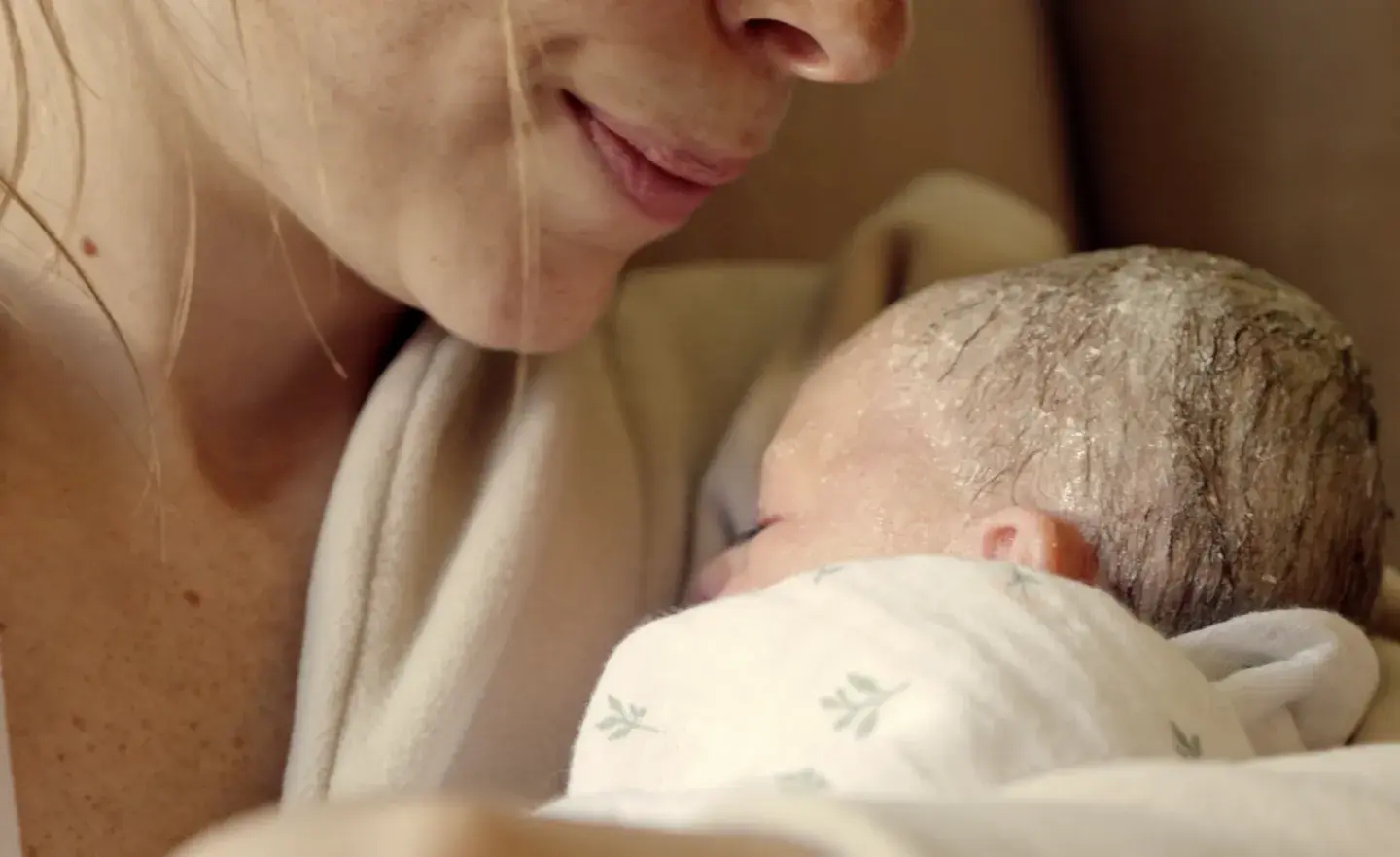A first breath. A first embrace. A first name. The moments just following birth are a rush of firsts. And as a baby enters the world for the first time, they arrive with nothing but their perfect selves. That is, except for one additional item…
The vernix caseosa, or vernix for short, is a natural protective coating that develops in the womb, and which covers the skin of most babies when they are born. A milky-white layer that wears off soon after birth, the vernix provides a plethora of interesting and vital health functions.1 So what exactly is this natural layer that blankets newborn babies? And what does it do? Read ahead to learn all about the vernix and its functions.

What is the Vernix?
The vernix caseosa is a white, waxy coating that covers the skin of a newborn. A protective layer that helps to defend a newborn’s skin against chapping and infection, the vernix serves multiple functions, both during pregnancy and just after birth.1
Some of the main functions of the vernix include:
Skin moisturization
Wound healing
Waterproofing
Lubrication as the baby passes through the birth canal
Providing a barrier against infection.1
First developing while the child is in-utero, the vernix typically wears off a few hours to a few days after birth.
Benefits of the vernix during delivery
During delivery, the vernix acts as a natural lubricant, making it easier for the baby to pass through the birth canal. This reduces friction and helps prevent skin abrasions and tears during the birthing process.2
Moreover, since the vernix contains antimicrobial properties, it acts as a physical barrier against harmful bacteria present in the birth canal.3
What happens when the vernix wears off?
The American Academy of Pediatrics recommends keeping the vernix on after birth to prevent delicate skin from drying out. Maintaining the vernix also protects preterm newborns from vulnerability to skin injury.
Retention of the vernix after birth results in significantly more hydrated skin surface with higher moisture accumulation rate and higher baseline hydration. This may facilitate postnatal skin hydration.1
Still, whether you proactively remove the vernix or wait for it to wear off naturally, it rarely lasts longer than a week or so. Once the vernix wears off, it could leave a baby vulnerable to elements that dry out skin or cause chapping.
How can I protect baby’s skin after the vernix wears off?
If you are concerned about baby’s delicate skin during the first days of life, consider using a newborn bathing product or baby moisturizer that support skin’s natural moisture barrier, the first line of defense against irritants, germs, humidity, dryness, and allergens.
Aveeno® Baby Healthy Start Newborn Balm, for instance, helps support baby’s natural skin moisture barrier, keeping skin smooth and protected. Better yet, it is inspired by the vernix, and formulated with a hypoallergenic Triple Oat Complex that is gentle on delicate newborn skin. Plus, it is approved for use on day 1 of life.

What is the best newborn wash?
The best wash for newborn babies should be gentle on skin, to keep little ones comfortable and moisturized. Aveeno® Baby Healthy Start Newborn Wash cleanses while preserving moisture in baby’s skin. Safe for day 1 use, this mild wash is made with Prebiotic Oat and rich emollients to help support baby’s natural moisture barrier. When used with Healthy Start Newborn Balm, the best baby wash for sensitive skin supports baby’s natural moisture barrier, keeping skin smooth and hydrated.
Proactive Care for Newborn Skin
Aveeno® Baby Wash together with Aveeno® Baby Balm represent a new proactive approach to newborn skincare, for a lifetime of healthy skin. Developing an Aveeno® Baby moisturizer routine can help defend baby’s skin barrier from day 1 of life.
Discover the best baby moisturizer, best newborn shampoo, and other products developed for sensitive baby skin with Aveeno® Baby.
Sources:
Singh G, Archana G. Unraveling the mystery of vernix caseosa. Indian J Dermatol. 2008;53(2):54-60. doi: 10.4103/0019-5154.41645. PMID: 19881987; PMCID: PMC2763724. https://pmc.ncbi.nlm.nih.gov/articles/PMC2763724/
Bamalan OA, Moore MJ, Menezes RG. Vernix Caseosa. [Updated 2023 Jul 4]. In: StatPearls [Internet]. Treasure Island (FL): StatPearls Publishing; 2025 Jan-. Available from: https://www.ncbi.nlm.nih.gov/books/NBK559238/
Mardini, J., Rahme, C., Matar, O. et al. Newborn’s first bath: any preferred timing? A pilot study from Lebanon. BMC Res Notes 13, 430 (2020). https://doi.org/10.1186/s13104-020-05282-0
